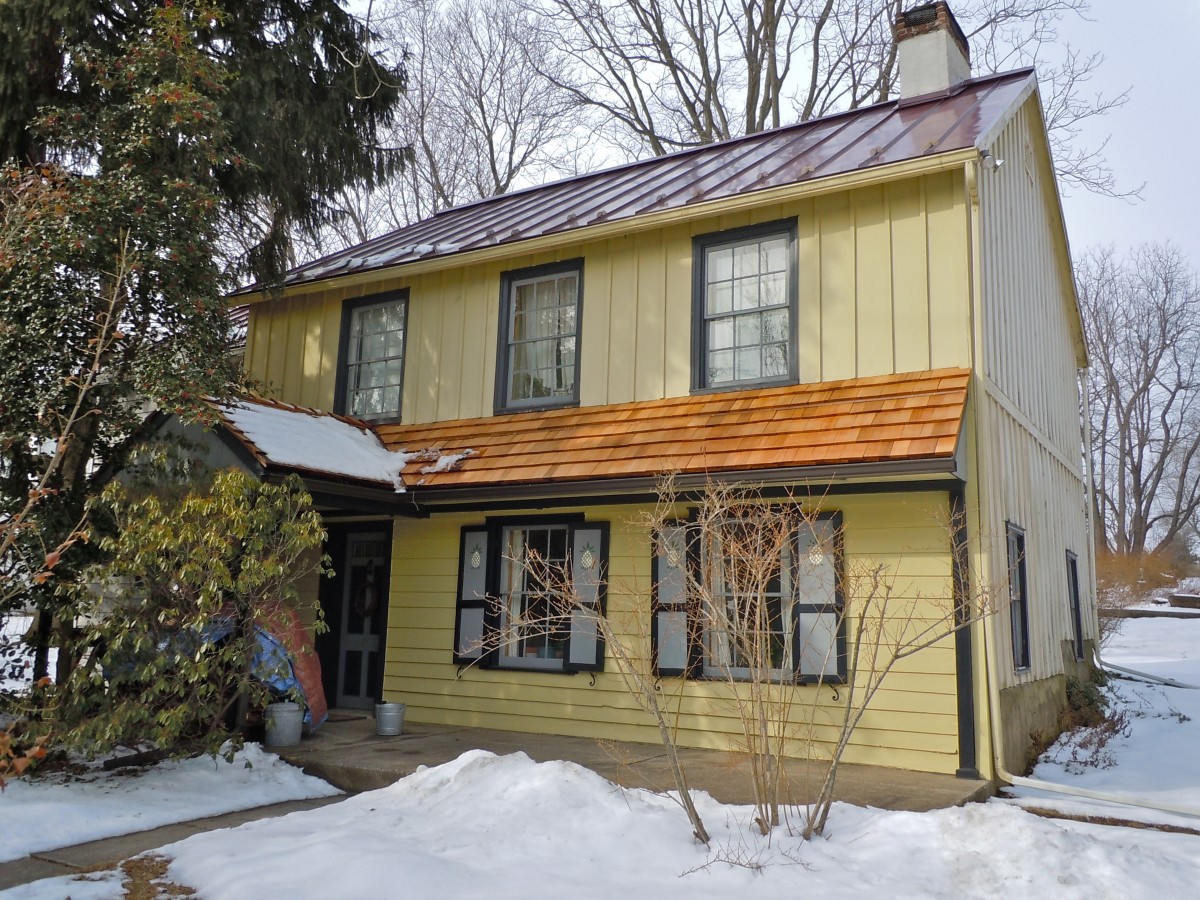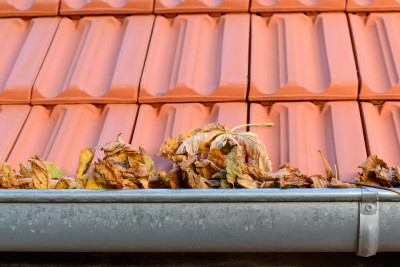
(Cover Photo by Smallbones)
There’s a lot of siding out there that mimic the look of real wood siding. People choose these imitation wood products due to pricing and the limited amount of maintenance. But, some homeowners won’t settle for anything but the real thing. Sure, you’ll have to be a little more proactive in maintaining real wood sidings, but the classic beauty is undeniable.

Sometimes preventing wood rot and moisture issues to your wood siding are as easy as hiring someone to clean out your gutters.
If you have wood siding, proper care and maintenance will go a long way to ensuring that your siding lasts a lifetime. Now that winter is upon us, it is especially important that you keep a close eye on your wood siding. If your siding is not 100%, tiny cracks and imperfections that have been left unattended can easily be further compromised by melted ice and snow. Since the sun won’t come out long enough to dry out the wood, your siding will slowly start to rot. And with rotten wood, comes toxic mold and you’ve got a domino effect of problems that will severely damage and compromise the integrity of your home, as well as your health.
So, what should you be looking for this winter? Let us tell you:
Caulking – check any area that requires caulking. We’re talking windows, doorways, vents, what have you. If you see cracks or damage, make sure too much damage hasn’t happened before you re-caulk. You don’t want to seal in moisture.
Stains – Check under the eaves, around your fireplace – if you’re lucky enough to have one – and check the ceilings inside your home. Look for water stains, discoloration or moisture buildup. If you notice stains in these areas, the problem could be your roof, not your siding. However, the problem may have originated from a bad roof, but moisture spreads quickly, causing problems for all your other systems that create a tight envelope.
Gutters and downspouts – We don’t have to go over this one again, do we?
Paint – check for cracked, peeling or bubbling paint on any surface. Before you remove the damaged area to prime and repaint, make sure that the damage hasn’t seeped further into your walls or siding.
If you’re on top of your game, spotting moisture issues as soon as they arise will help you solve the problem quickly. But, before you go repairing minor moisture damage yourself, give yourself peace of mind and have your home professionally inspected. Water is a tricky intruder. One little crack and a few drops of water left to their devices, and you could be looking at a world of trouble.
Your home is your biggest investment. Why take the chance? The more you know, the better chance you have of keeping your home mold and moisture free.

